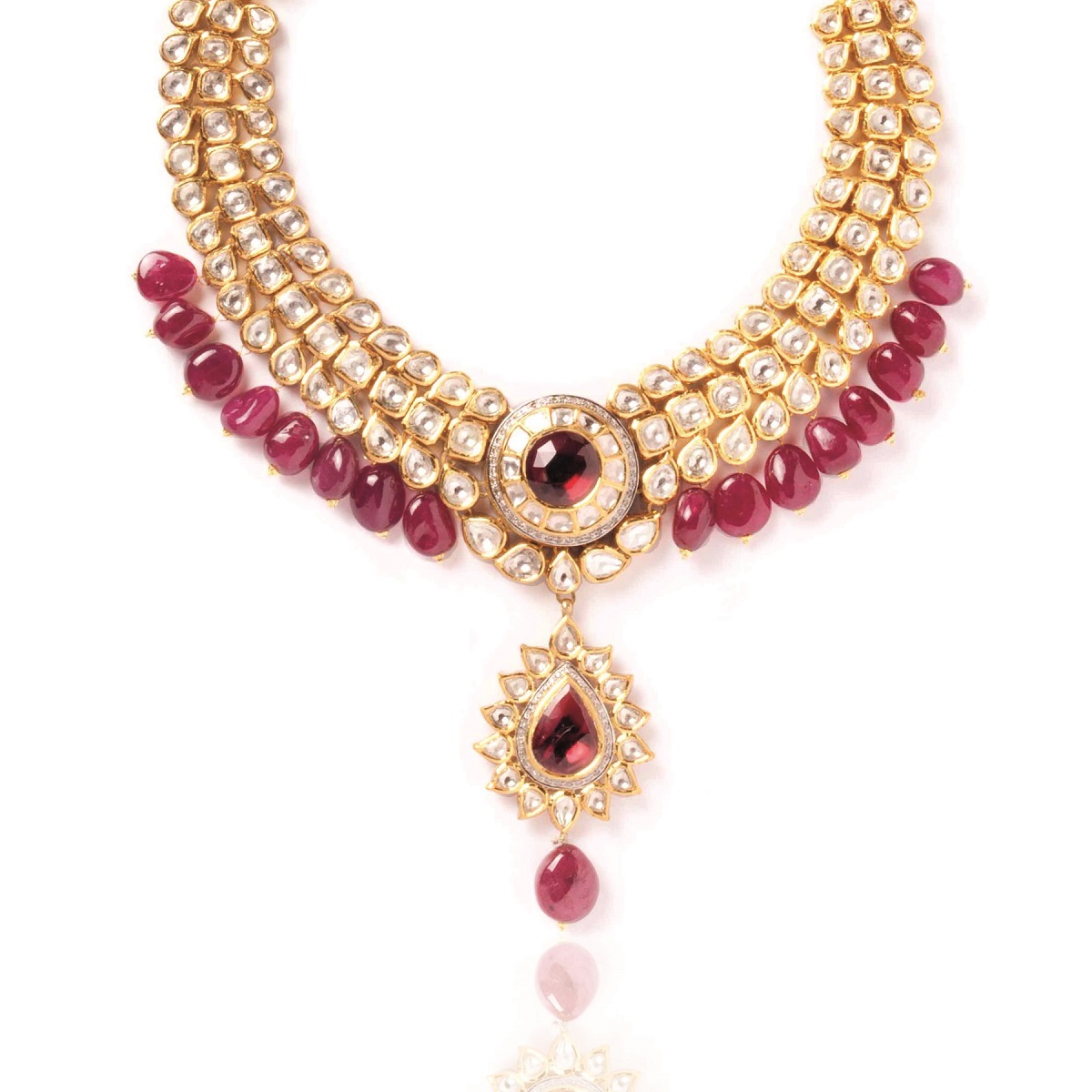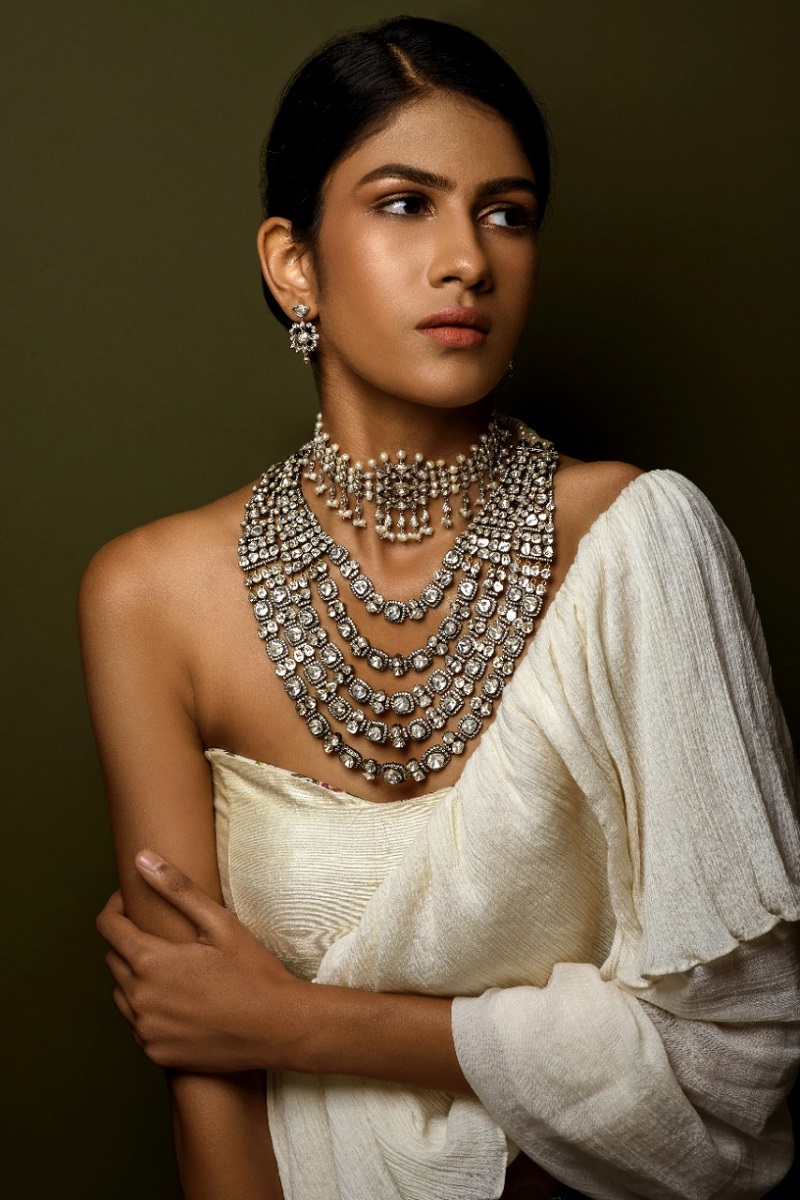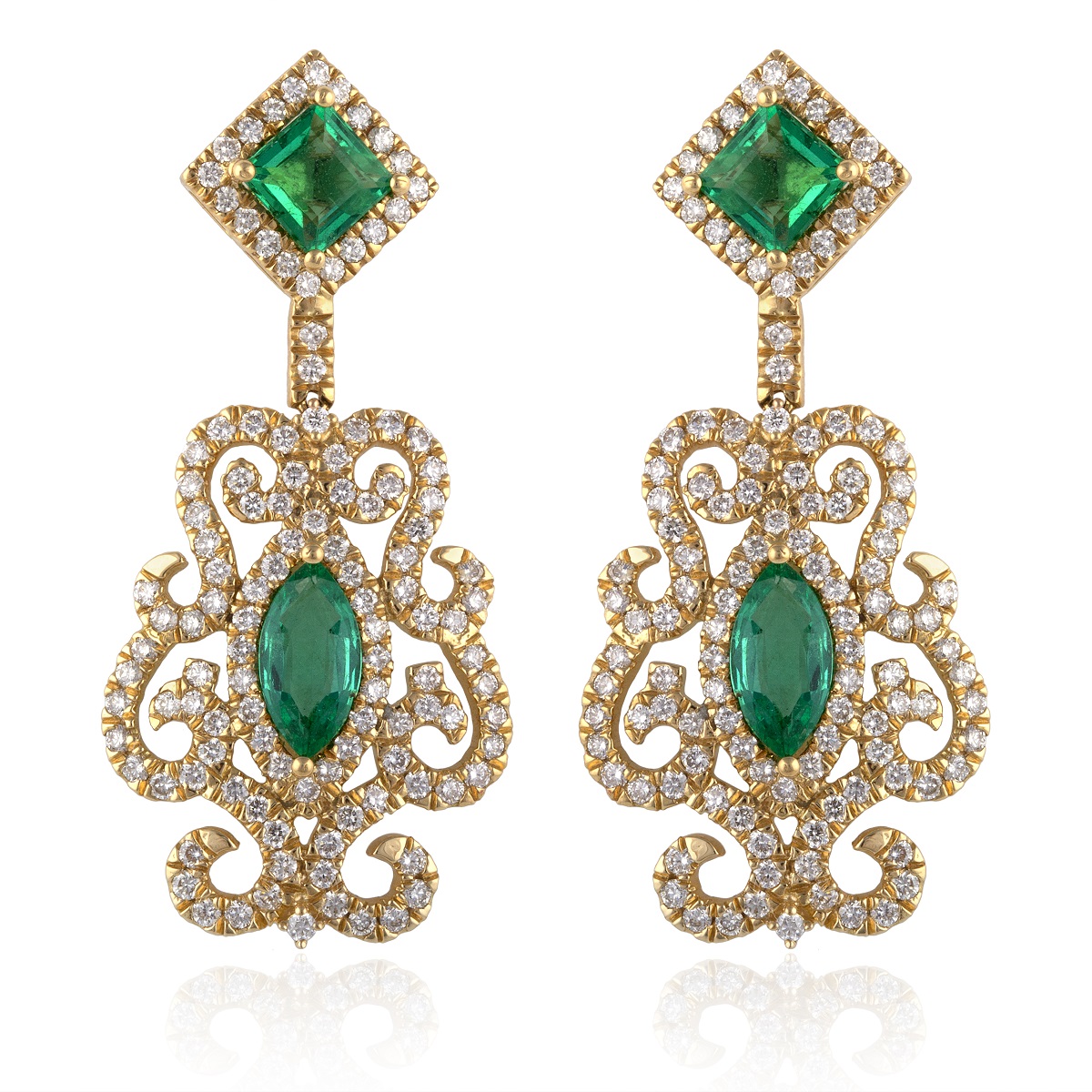Why heritage jewellery is becoming popular for the festive season
Schenelle Dsouza
Heritage and traditional jewellery in India have always held high value for grand celebrations, especially weddings. Brides would often don some of the most spectacular selections of polki and Kundan jewellery on their big day, most of which would then be packed and locked for another big wedding. However, with the changing times, heritage and traditional pieces have become statement pieces that exceed wedding celebrations, with them being worn for festivals and other ethnic celebrations. Some have even gone so far as to pair these with contemporary pieces for a more defined look.

So where does heritage jewellery stand today? Is it making a comeback or is it simply undergoing a phase of reinvention? To know more about the presence of heritage jewellery in the Indian jewellery market, LuxeBook spoke to prominent jewellery designers Milind Mathur — Partner & Creative Director of Kohinoor Jewellers, Rohan Sharma — Managing Director of RK Jewellers, Tarang Arora — Creative Director & CEO of Amrapali, and Richa Singh — Managing Director India and Middle East, Natural Diamond Council.
History and origin
The history of heritage and traditional jewellery can be traced back to the 19th and 20th centuries when it was famously worn by Indian royals back in the day. They possessed some of the most beautiful jewellery collections, heavy, but stunning nonetheless. These were worn not just for weddings and ceremonies, but for everyday wear as well. The beauty and elegance of heritage jewellery continue to date. It is still considered a timeless heirloom, making it desirable for occasional wear even today. And while some believe it might have changed, Taran Arora of Amrapali considers it to be exactly as it was back in the day. “Heritage jewellery is still being worn and the designs used then are still used today. Those are the kind of pieces which are evergreen, not governed by the current trends and styles.”

Going a little deeper into the exact origin of heritage jewellery, Milind Mathur says that Agra was where heritage jewellery prospered. “Agra is a Bastian of Mughal art because the Mughals were connoisseurs of fine jewellery. And when we talk about heritage jewellery; that is where it originated from.”
The defining point of heritage jewellery is its intricate detail work, complemented by precious jewels and unique carving techniques, according to our designers. Milind Mathur agrees with the influence of Indian architecture on heritage jewellery. “Floral motifs are most commonly used; these are inspired by Mughal architecture,” says Mathur. “If you look at any piece of Mughal architecture, you will see floral motifs like orchids, lilies and lotuses. These are used with a combination of paisley work which gives it a lot of intricate detailing.”

Heritage vs contemporary
The jewellery industry like any other industry has undergone an evolution, and that includes contemporary evolution. Making it fit for the modern wearer, heritage jewellery too has changed since its beginning. Mathur recalls the evolution as an exciting time for jewellers to experiment with the craft. “For jewellers like us, who work on both heritage and contemporary jewellery, it is an exciting time. Heritage jewellery already has a niche for itself. But contemporary jewellery has the ability to complement traditional jewellery so both can co-exist in harmony.”
Richa Singh claims that India’s association with heritage jewellery runs deep as it was always cherished. “Traditional jewellery is the perfect amalgamation of sentiment and intricate Indian craftsmanship, it also stands for an outstanding reflection of the evolution of jewellery through ages.”

Talking about the position of heritage jewellery in the Indian market, Arora stresses on the superiority of heritage jewellery over other kinds of pieces. Having been passed down through generations, it has always had an edge that modern jewellery might not be able to replicate. Nonetheless, the evolution or refinement of heritage jewellery is prevalent due to the changing times.
Timely upkeep
“In the modern jewellery market, you will come across an old piece of jewellery that needs to be fixed or updated. And so, you do a little tweaking, you make it fit for the modern client today,” says Arora. “Sometimes it might be the entire piece that is damaged or sometimes just the stone, which needs to be replaced.”

Aside from damage, it is modern technology and the changing thought processes, that call for the evolution of heritage pieces. Designers have been able to maintain the overall aesthetic of heritage jewellery, but the change involved often includes creating pieces that are a little lighter and more wearable, so that it can be worn for different occasions. Our designers call it the reinvention of heritage jewellery where the original design aesthetic remains the same.
The question of revival and reinvention of heritage jewellery has been on a standstill. Arora believes that there has been a simultaneous revival and reinvention going on across all industries. “Reinvention is happening. The beauty of it, is that you get to explore new techniques; different techniques done in different parts of the country while adding your own flair to it. We will always be able to revive what we buy today. Old stones will be sourced, new pieces will be made and new pieces will be designed to look like a heritage piece using those old stones. So, I believe that both go hand-in-hand.”
Making heritage jewellery

Heritage jewellery comprises traditional gold and polki pieces filled with diamonds and precious stones. One example of heritage jewellery according to Rohan Shah is temple jewellery. “A sub-category of heritage jewellery, temple jewellery often features God and goddess figures seen in several old South Indian temples. These are often pure gold jewellery that uses very few embellishments.”
What makes heritage and traditional jewellery stand out the most is their colourful embellishments. Heritage jewellery uses a combination of both, polki diamonds, which were flat-cut diamonds at the time, as well as coloured stones. “Emeralds and rubiesn were traditionally used back then and even today. The art of carving stones, which isn’t practised as much is now becoming a trend once again.”

Speaking of the technique used, Arora says, “I think every part of the country has its own defining factor for heritage jewellery. Jadau part was a very important setting technique used is most parts. For Hyderabad, using diamonds which were single cut is something which was used frequently in heritage jewellery. Or the old European cut was also used in the old heritage jewellery for them.”
Re-wearing heritage pieces
One of the latest trends in the jewellery industry is wearing heritage and traditional pieces for occasions like Diwali and Dhanteras. During festivals is the time when heritage jewellery sells the most, according to jewellery designers in India. “I think these sell more during wedding season; however, they have picked up for the festive season as well,” says Arora. “We are selling bigger pieces and now people are wearing more everyday pieces, like chaand baalis or even jhumkas that go with the festive vibe.”

While there will always be a bent towards traditional designs for special occasions and festivals, more and more people are choosing vintage cuts even for their everyday wear because of their versatility and understated elegance. Rose cuts are gaining popularity in engagement rings whereas briolettes are everywhere – from sarpechs to chandelier earrings. Jewellery today is a way of self-expression and vintage cuts truly mirror how we are a mix of tradition and modernity.
Richa Singh claims that people are opting for jewellery that reflects their personality and individuality. “While people still opt for gold due to its legacy, more consumers are combining natural diamonds with various metals, opting for jewellery that is the perfect symbol to express love and celebrate joyous occasions. After all, what is better than a little diamond sparkle to enhance that golden glow?”




